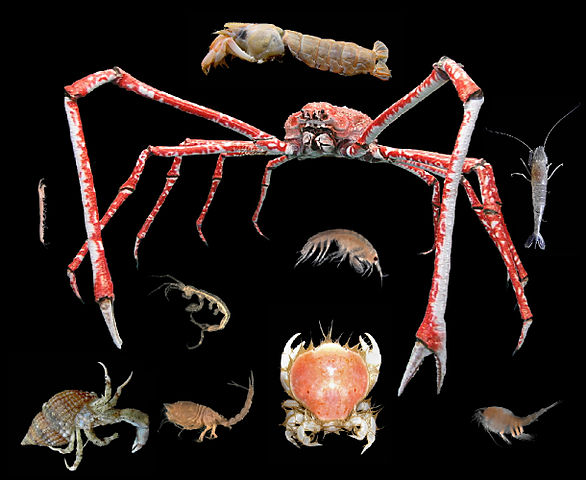
The diversity of malacostraca, showing representatives of different orders. Not to scale.
Image by Hans Hillewaert, Wikipedia, Creative Commons Attribution Share Alike.
| Malacostraca | ||
| Arthropoda | Malacostraca |
| Ostracoda | Arthropoda | Eucrustacea
└─► |
Malacostraca | |
| Ostracoda | None |
Decapoda |
|
Abbreviated Dendrogram
Crustacea
│
└─Malacostraca
├─Phyllocarida
└─┬─Hoplocarida
└─Eumalacostraca
├─Syncarida
├─Peracarida
└─Eucarida
└─Decapoda
|
Contents
Overview |
 The diversity of malacostraca, showing representatives of different orders. Not to scale. Image by Hans Hillewaert, Wikipedia, Creative Commons Attribution Share Alike. |
The malacostraca are the largest of the six classes of crustaceans, containing over 25,000 extant species, divided among 16 extant orders. Its members display a greater diversity of body forms than any other class of animals, and include crabs, lobsters, shrimp, krill, woodlice, scuds (Amphipoda), mantis shrimp and many other less familiar animals. They are abundant in all marine environments and have also colonised freshwater and terrestrial habitats. They are united by a common bauplan (ground plan), comprising 20 body segments (rarely 21), divided into a head, thorax and abdomen. - Wikipedia. They have a reasonable fossil record extending back to the Ordovician (Cambrian forms attributed to them are misinterpretations of other taxa, or stem Crustacea or stem athropods
| Ostracoda | Malacostraca |
Page MAK120517 Creative Commons Attribution